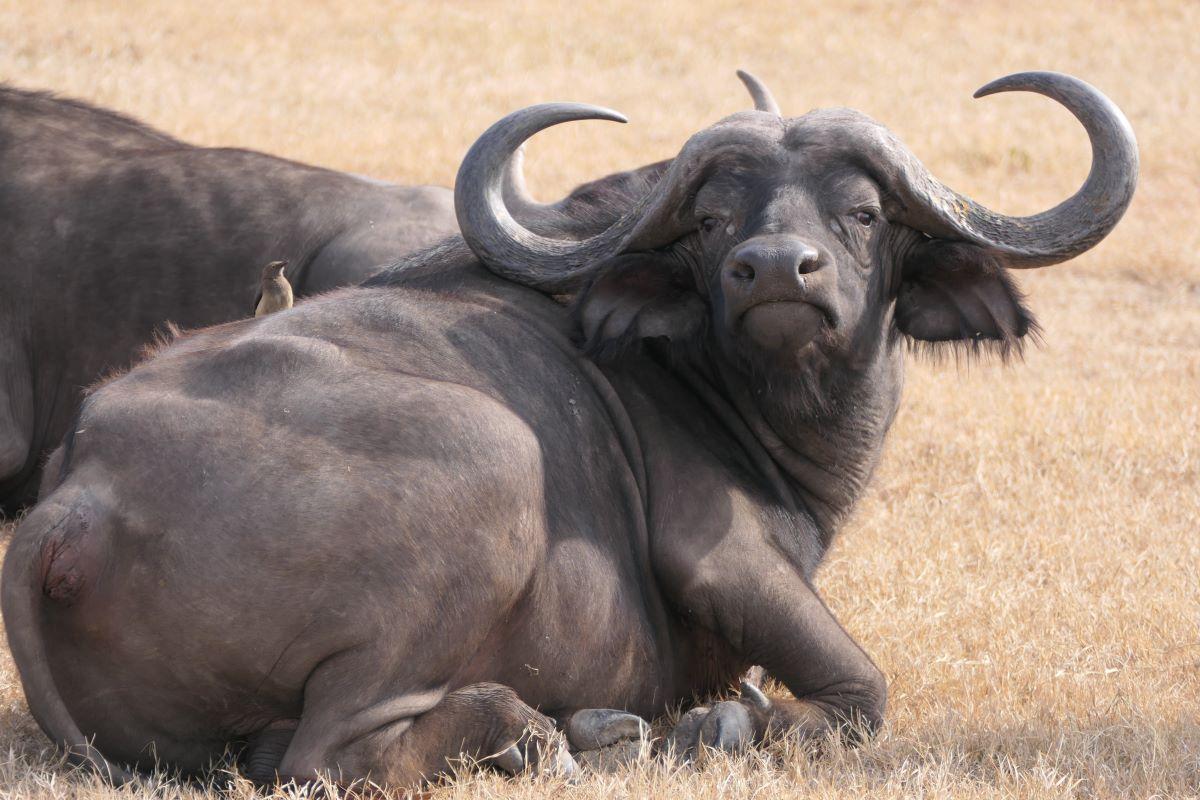Buffalo hunting in Africa stands out as one of the most challenging and rewarding experiences for hunters seeking adventure. The Cape buffalo, often called “Black Death,” is known for its unpredictable nature and formidable strength, making it a true test of skill and patience.
We understand that planning an African hunting safari is about more than just the hunt. It’s about immersing ourselves in the untamed landscapes and connecting with wildlife in a responsible way. Our platform brings together a wide range of African hunting listings, giving hunters in the United States access to ethical and regulated buffalo hunting opportunities. Whether you’re new to the sport or a seasoned hunter, exploring buffalo hunting opens the door to unforgettable moments and lasting memories.
[DYNAMIC-BLOGTABLEOFCONTENT]
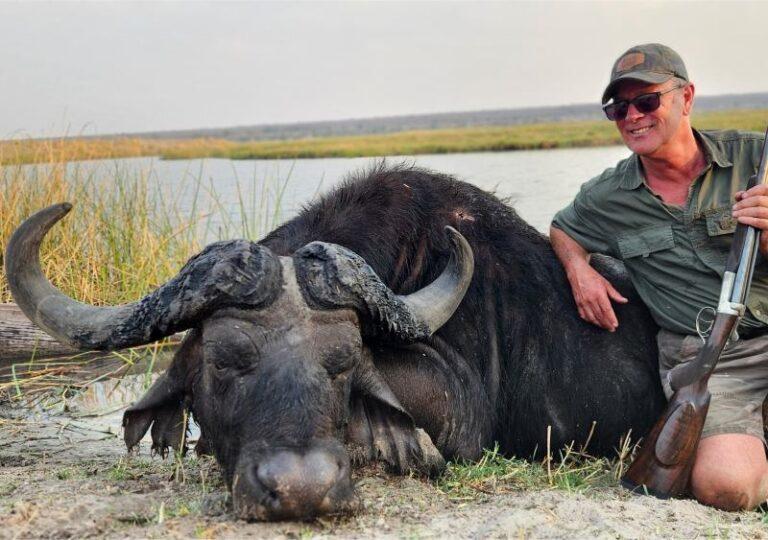
Key Takeaways
-
Buffalo hunting in Africa offers a challenging and rewarding experience, especially with the unpredictable Cape buffalo, requiring skill, patience, and proper preparation.
-
Legal regulations, permits, and ethical practices are essential for sustainable buffalo hunting, with strict guidelines on firearms, hunting methods, and seasonal restrictions to ensure conservation.
-
Success in buffalo hunting hinges on careful planning, physical and mental preparation, the right gear, and choosing reputable guides or outfitters for safety and compliance.
-
The spot-and-stalk method is the most popular and effective approach, while careful shot placement and ethical harvesting are critical for a humane hunt.
-
Safety and ethical considerations should always be a priority, including adherence to local laws, respect for wildlife, and support for conservation efforts.
-
Hunters can choose between guided and DIY hunts, as well as rifle or bow hunting, tailoring their experience to skill level, budget, and personal values.
Understanding Buffalo Hunting
Buffalo hunting in Africa offers a unique blend of history, challenge, and conservation. Those looking to embark on an African Cape buffalo hunt often have questions about species, locations, and the legal framework. Let’s break down what makes these hunts unique and what hunters need to know before booking a guided buffalo hunting Africa experience.
Types of Buffalo and Hunting Locations
Buffalo hunting safari options primarily focus on the African Cape buffalo, known for its size and unpredictable behavior. This species appears across key hunting destinations, each offering distinct environments and hunting packages:
-
South Africa: Known for well-managed private reserves and accessible African Cape buffalo hunts. Many listing options here feature both plains hunting and dangerous game buffalo hunting for those seeking higher stakes.
-
Zimbabwe: Popular for traditional free-range buffalo hunting in vast, rugged landscapes. When asking how to hunt Cape buffalo, many experienced guides recommend Zimbabwe for authentic dagga boy hunting and high trophy quality.
-
Botswana and Namibia: Recognized for ethical buffalo hunting Africa standards and sustainable game management. These locations deliver both first-time and repeat hunters a credible and regulated hunting experience.
Top buffalo hunting listings often note that choice of destination impacts not just the environment and challenges, but sometimes the cost of buffalo hunting safari due to travel, inclusion of guided services, and licensing fees.
Table: Popular Locations for Buffalo Hunting
|
Location |
Main Species |
Hunt Type |
Unique Feature |
|---|---|---|---|
|
South Africa |
Cape Buffalo |
Private Reserve, Guided Hunts |
Prime range, high availability |
|
Zimbabwe |
Cape Buffalo |
Free-Range, Dangerous Game |
Dagga boy hunting, large areas |
|
Botswana |
Cape Buffalo |
Ethical, Wilderness |
Strict quotas, strong conservation |
|
Namibia |
Cape Buffalo |
Regulated, Plains & Bushveldt |
Diverse terrain, professional guides |
Legal Considerations and Permits
Buffalo hunting in Africa follows strict legal guidelines. Applying for and securing the necessary hunting permits ensures every hunt remains ethical and within the bounds of local and international wildlife conservation standards. Regulations often stipulate:
-
Permits and Quotas: Governments of South Africa, Zimbabwe, Botswana, and Namibia implement annual permit quotas for Cape buffalo hunting. This supports sustainability, aligns with ethical buffalo hunting Africa principles, and guarantees proper management of wildlife populations.
-
Prohibited Practices: Certain hunting practices, such as using drones, are banned to prevent distress or unfair advantage. Each region issues clear regulations that reputable outfitters and guides must follow.
-
Firearm Regulations: Legal frameworks also cover equipment. For example, the best rifle for buffalo hunting requires minimum caliber sizes stated by government or reserve policies, ensuring humane and clean harvesting. Outfits often provide Cape buffalo hunting gear checklists to keep hunters compliant and prepared.
-
SEASONAL RESTRICTIONS: Permit windows and the best time for buffalo hunting Africa sometimes overlap, so hunters arranging trips benefit from understanding the legal hunt seasons and booking accordingly.
When searching for African hunting listings or buffalo hunting packages, always check that the provider operates within these rules. Transparent outfitters list legal requirements and handle most permitting as part of their guided buffalo hunting Africa services, making it easier for clients to focus on the hunt and conservation impact.
This approach not only preserves Africa’s iconic wildlife but fosters trust and credibility, both cornerstones for sustainable buffalo hunting tourism.
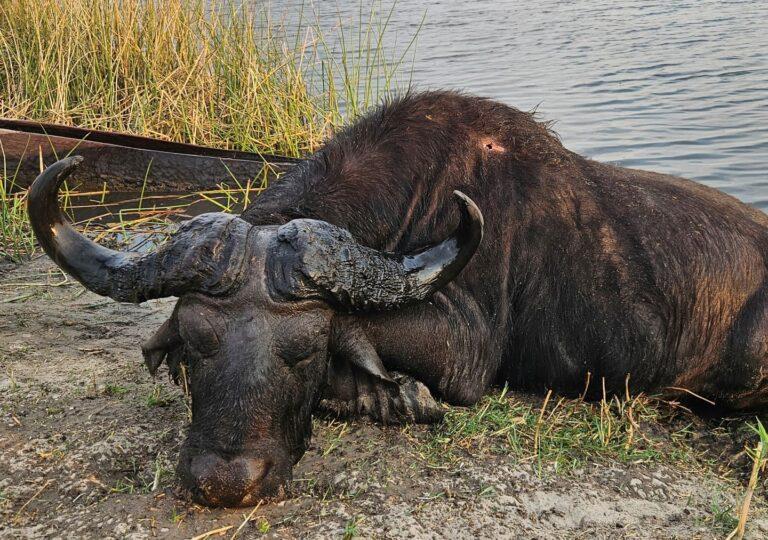
Preparing for a Buffalo Hunt
Buffalo hunting demands careful planning and real preparation. When asking how to hunt Cape buffalo or begin a guided buffalo hunting Africa experience, bringing the right equipment and mindset is the first step.
Essential Gear and Tools
Buffalo hunting requires a thoughtfully curated gear checklist for efficiency and safety. We always recommend prioritizing reliability and practicality when compiling a Cape buffalo hunting gear checklist.
-
Firearms: Opt for the best rifle for buffalo hunting, such as .375 H&H Magnum or .416 Rigby, meeting the minimum caliber requirement outlined by most African laws for dangerous game buffalo hunting.
-
Optics: Quality binoculars and scopes help spot buffalo sign from a safe distance and confirm Cape buffalo shot placement—vital for ethical buffalo hunting Africa.
-
Ammunition: Use only premium, heavy-grain bullets specifically designed for deep penetration, particularly on tough animals during Dagga boy hunting.
-
Footwear and Clothing: Durable, lightweight boots that give ankle support and moisture-wicking clothes keep you comfortable for hours of tracking, especially on buffalo hunting safari Africa trips.
-
Accessories: A daypack stocked with water, high-energy snacks, a first-aid kit, GPS device, and a multi-tool covers unexpected situations.
-
Protective Gear: Sun hats, sunglasses, sunscreen, and insect repellent become essential in peak buffalo hunting in South Africa and Zimbabwe.
Wondering if there’s more to pack? Many Cape buffalo hunting tips mention customizing gear based on season, destination, and length of the hunt.
Physical and Mental Preparation
Physical stamina and mental focus both play a critical role in successful African Cape buffalo hunts. Covering long distances on foot while tracking herds across challenging terrain is common. So, we keep our own exercise routines simple but routine, including walking, light running, and basic strength training weeks ahead of our hunt.
-
Endurance: Cardio sessions like brisk walks and short morning runs help build stamina for unpredictable terrain.
-
Strength: Leg and core exercises—think squats, lunges, and planks—fortify muscles needed for hiking through rugged plains.
-
Flexibility: Stretching routines maintain agility, reducing the risk of injury while navigating brush and open fields.
Are you mentally prepared? On dangerous game buffalo hunting expeditions, quick decision-making can be just as important as physical readiness. We practice situational awareness, stress management, and even review Cape buffalo shot placement diagrams for confidence when it counts.
If you plan to undertake guided buffalo hunting Africa or, more specifically, buffalo hunting in South Africa or Zimbabwe, guide-led pre-hunt briefings bring added advantage—helping acclimate you to local conditions, safety procedures, and animal behaviors.
With solid prep, all buffalo hunts—from buffalo hunting safari Africa trips to Dagga boy hunting—become not just achievable, but rewarding experiences. Looking for more guidance? Our experts can match listings and hunting packages to your skill and experience level, ensuring a seamless start.
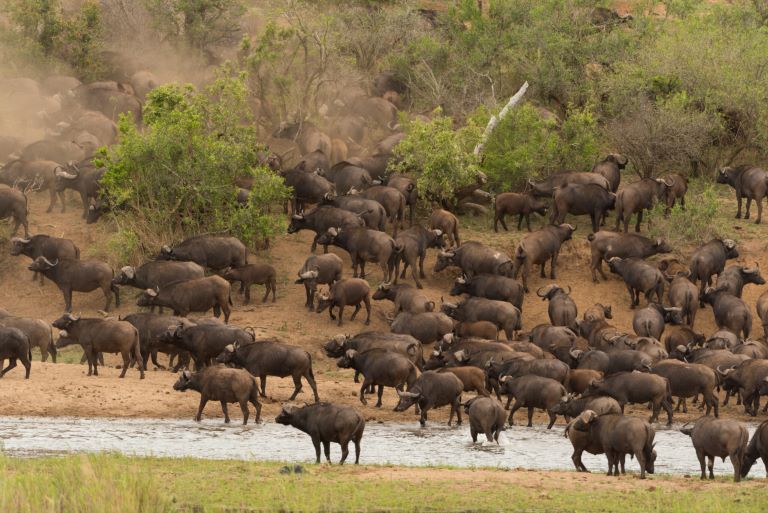
Planning Your Hunt
Buffalo hunting in Africa starts with careful planning and smart choices. Each step shapes the overall success of your buffalo hunting safari Africa experience.
Choosing a Hunting Method
Selecting the right hunting method impacts the entire hunt. Spot-and-stalk is the method most often recommended for Cape buffalo hunting. We spot buffalo from a distance, then carefully close in using available cover. This approach allows us to assess herd movements and identify mature bulls, known as dagga boys. Stand hunting is also possible, especially in areas with high buffalo traffic or near watering holes. Each method has its advantages, but spot-and-stalk gives more flexibility during African Cape buffalo hunts.
Common Hunting Methods
|
Method |
Recommended For |
Key Feature |
|---|---|---|
|
Spot-and-stalk |
Dangerous game buffalo hunting |
Flexibility and active tracking |
|
Stand hunting |
Large herd observation |
Passive, best at water or rub spots |
Selecting the Right Time and Season
Picking the best time for buffalo hunting Africa directly affects sightings and results. The dry season, which usually runs from May to October, offers easier tracking because buffalo gather near water and foliage is thin. Also, the cooler weather during early mornings and late afternoons causes more buffalo movement. If you’re after trophy-quality hides, late season hunts from November to December provide the thickest coats. For those looking at the cost of buffalo hunting safari, off-peak months may offer better rates, but game recovery can be more difficult if daytime temperatures are extreme.
Seasonal Guide
|
Season (Months) |
Benefit |
Consideration |
|---|---|---|
|
May–October (Dry) |
Easier tracking, visibility |
Water dependence, increased chance of sightings |
|
November–December |
Trophy hides |
Warmer days may require early starts |
|
Rainy season (varies) |
Lower rates |
Dense cover, dispersed herds |
Locating Buffalo Herds
Locating buffalo herds needs patience and good observation skills. We search for visible signs such as well-used rubs, trampled paths, and large clumps of shed hair along trails and brush. Early mornings and late afternoons are prime times for glassing from elevated spots, as buffalo herds favor open grazing grounds during these hours. For those tracking dagga boys—solitary old bulls—look for isolated paths away from main herds. Collaboration with local guides, who know buffalo patterns and terrain, greatly increases success on both Buffalo hunting in Zimbabwe and Buffalo hunting in South Africa.
Key Herd Finding Tips
-
Use binoculars to scan open grazing areas at sunrise and sunset
-
Follow fresh tracks, droppings, and rubs in high-activity areas
-
Pay attention to noise, such as moving brush or distant grunts
-
Focus on water sources during the dry season, where herds regularly congregate
Making these informed decisions clears the path for an efficient and rewarding Cape buffalo hunting adventure, meeting ethical standards and all legal regulations. If you’re searching for expert Cape buffalo hunting tips or want to know how to hunt Cape buffalo, consider guided buffalo hunting Africa packages with proven results. Each step in planning helps secure a successful and responsible African hunting experience.
The Hunting Process
Buffalo hunting is a unique experience that demands skill, patience, and respect for wildlife. Knowing how to hunt Cape buffalo on a safari in Africa means adapting to the land and working with experienced guides from start to finish.
Stalking and Approaching Buffalo
For African Cape buffalo hunts, spotting herds is a game of observation and persistence. Buffalo often graze in open areas during early morning and late evening. We start with careful glassing from elevated vantage points, picking up signs like tracks, fresh dung, and rub marks on bushes. These clues help narrow down active trails.
When stalking, slow movement and wind direction are critical. Approaching upwind keeps our scent hidden from wary animals. In dangerous game buffalo hunting, distance matters—often we close in to within 60–80 yards before a final setup. Guides usually lead this approach, keeping safety and ethical hunting in mind. We remain alert to changing herd positions and unpredictable dagga boys—older solitary bulls—who are commonly targeted on guided buffalo hunting in Africa.
Shot Placement and Harvesting
Cape buffalo shot placement is the difference between a quick, humane harvest and unnecessary suffering. We recommend aiming 2–3 inches behind the ear, targeting the spinal cord below the skull base. This instantly drops the buffalo and ensures a clean kill, as cited by seasoned experts in ethical buffalo hunting Africa. Avoid headshots or shots too far forward; thick bone structure often causes bullet deflection or non-lethal wounds.
Best rifle for buffalo hunting? For most Cape buffalo hunting tips, hard-hitting calibers like the .375 H&H or .416 Rigby combined with solid projectiles provide the penetration needed for these large animals. Always verify local regulations about minimum caliber requirements for big game.
Field Dressing and Meat Handling
After a successful harvest on a buffalo hunting safari Africa, we move quickly to field dressing. Removing the internal organs helps cool the carcass fast and reduces the risk of spoilage. Field dressing includes only the removal of entrails—it doesn’t cover skinning or quartering. Most buffalo hunting in Zimbabwe and buffalo hunting in South Africa includes support vehicles for transport, like bail bed trucks or tractors, as an average animal can weigh over 1,000 pounds.
The hunter’s responsibility covers further processing and taxidermy. Coordinating with local processors ensures each part—from trophy hides to protein-rich meat—is put to use. If the terrain is rough, multiple trips may be needed, so advance planning for logistics and labor is essential. These steps support ethical buffalo hunting Africa principles, maximizing respect for the animal and compliance with sustainability guidelines.
Want to know the best time for buffalo hunting Africa? Dry season generally offers easier access and tracking, but different locations across the continent hold hunts year-round. Always check your Cape buffalo hunting gear checklist before heading out to prevent any last-minute setbacks.
Buffalo hunting isn’t just about the pursuit; it’s a balanced process rooted in tradition, careful preparation, and conservation.
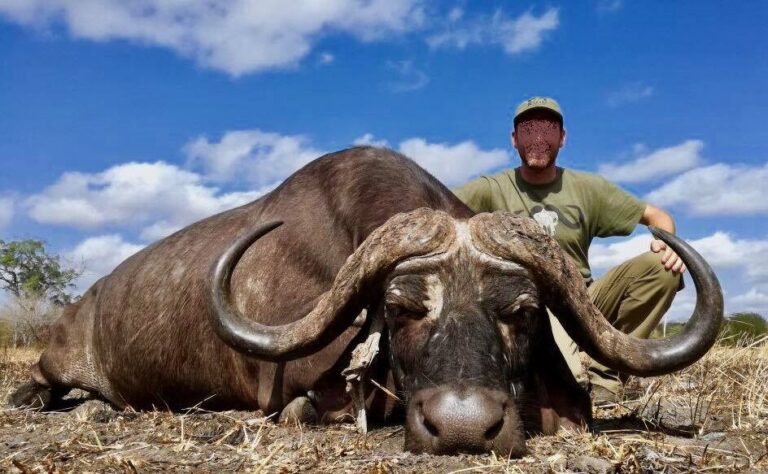
Safety and Ethical Considerations
Safety stands at the core of every buffalo hunting safari experience, whether we’re exploring new terrain during guided buffalo hunting Africa or targeting the formidable Dagga boy in Zimbabwe. Ethical practices support conservation and guarantee memorable African Cape buffalo hunts for generations.
Safety Tips for Hunters
Buffalo hunting involves real risks, especially with unpredictable animals like Cape buffalo. Following safety basics reduces accidents and increases successful Cape buffalo shot placement outcomes.
-
Remain Vigilant: Risk levels rise quickly in dangerous game buffalo hunting; always know where the nearest cover and exit points are, and stay alert during approach.
-
Listen to Guides: Guides on buffalo hunting in South Africa or Zimbabwe manage complicated situations with experience, so following their direction ensures group safety in critical moments.
-
Use Proper Firearms: Selecting the best rifle for buffalo hunting matters; use calibers proven effective for large game to maximize firearm control and humane finishes.
-
Maintain Safe Distance: Until instructed, remain inside vehicles since buffalo often charge without warning if surprised-at-close quarters, especially when tracking game on foot.
-
Target Placement: Follow the recommended Cape buffalo shot placement, about 2–3 inches behind the ear, to ensure instantaneous and ethical results.
-
Emergency Preparation: Carry first-aid essentials, know basic trauma procedures, and confirm guides have access to rapid communications for emergencies.
Ethical Hunting Practices
Ethical buffalo hunting relies on respect for wildlife, fair chase, and conservation-driven methods during the hunt.
-
Comply with Regulations: All African Cape buffalo hunts follow strict regional laws and quotas. Adherence prevents overhunting and sustains wild populations.
-
Select Ethical Outfitters: Using only reputable, pre-qualified outfitter services for guided buffalo hunting Africa guarantees hunting standards and transparent practices.
-
Practice Fair Chase: Avoid artificial aids like drones during hunts, since fair chase values challenge and skill above easy successes.
-
Conserve Natural Habitat: Help preserve the landscapes by minimizing disturbance and respecting all local guidelines on travel, waste, and fire management during the hunt.
-
Training and Education: Stay up to date with best practices for Cape buffalo hunting, including learning about animal behavior and ethics from trusted sources before each trip.
-
Support Conservation: Participating in regulated dangerous game buffalo hunting provides economic incentives for habitat protection and continued scientific management across Africa.
Making safety and ethics central to every step enhances the experience for us as hunters and supports the future of buffalo hunting safari Africa adventures.
Troubleshooting and Common Issues
Buffalo hunting in Africa brings both great excitement and real challenges. Sometimes even detailed planning leaves us facing unexpected situations. Below, we address two typical issues with practical advice and proven solutions for Cape buffalo hunting safaris.
Dealing with Difficult Herds
Difficult herds slow down progress and test patience, especially during guided buffalo hunting in Africa. Cape buffalo often break away when alarmed, moving into dense cover or running for miles. We adapt by:
-
Watching herd patterns: Cape buffalo herds prefer open grass during cooler hours. Spotting from high ground at dawn or dusk often gives us the best chance.
-
Reading signs: Scattered rubs, large hoof tracks, and clumps of shed hair lead us to core areas, making herd location faster.
-
Working with the wind: We always stalk against the wind, as buffalo catch human scent quickly.
-
Staying persistent: If the herd vanishes into thorn thicket, circling wide and approaching from new angles may get us back in position without alerting the group.
Buffalo hunting in Zimbabwe or South Africa often means adjusting strategies several times daily.
What to Do If You Miss or Injure a Buffalo
Misses and non-lethal hits sometimes happen. We respond quickly and ethically with these steps:
-
Watching the reaction: A wounded Cape buffalo may join the herd or slip away alone. We track by observing blood, direction, and hoof marks.
-
Following up safely: Only experienced hunters and guides move in, using dense brush or uneven ground for cover.
-
Focusing on ethical buffalo hunting in Africa: We aim for humane and fast recovery. Secondary shots are placed just behind the shoulder for vital organ impact, repeating the proven Cape buffalo shot placement principle.
-
Using suitable gear: The best rifle for buffalo hunting—such as a .375 H&H or larger—gives reliable stopping power needed for dangerous game hunts.
-
Communicating: Team members keep each other updated on the buffalo’s path, especially if it charges or shows signs of aggression.
High-stakes moments sometimes demand patience and teamwork—always placing buffalo welfare and safety first on any buffalo hunting safari in Africa.
Alternative Methods and Tips
Exploring alternative approaches in buffalo hunting opens up options for different skill levels and hunting goals. Depending on your style, location, and the type of Cape buffalo hunting package, each method offers unique pros and cons to consider.
Guided vs. DIY Hunts
Choosing guided or DIY hunts can significantly impact your African Cape buffalo hunting experience.
Guided Buffalo Hunting Africa
-
Expert Guidance: Professional guides understand Cape buffalo behavior, land features, and local regulations. This knowledge increases safety and chances of a successful hunt.
-
Logistical Support: Outfitters arrange transport, permits, and often supply the Cape buffalo hunting gear checklist. That takes away much of the planning hassle.
-
Regulatory Assurance: Reputable guides maintain compliance with ethical buffalo hunting practices in Africa, making your experience more secure and legal.
-
Access to Premium Areas: Licensed operators can offer opportunities for Buffalo hunting in Zimbabwe or Buffalo hunting in South Africa on prime lands inaccessible for independent hunters.
DIY Buffalo Hunting
-
Personal Freedom: Planning your route and choosing your pace brings a strong sense of individual achievement, especially for experienced hunters.
-
Cost Advantages: DIY hunts may lower the cost of buffalo hunting safari by removing guide fees. But keep in mind extra costs for equipment, permits, and planning.
-
Preparation Challenge: Securing Cape buffalo hunting permits, navigating regulations, and handling logistics are your own responsibility. For those wanting total control, it’s a rewarding but demanding option.
Bow Hunting vs. Rifle Hunting
Selecting bow or rifle impacts everything from your gear selection to your proximity to dangerous game buffalo hunting opportunities.
Bow Hunting
-
Close Encounters: Bow hunters get nearer to Cape buffalo, usually within 40 yards. This method demands patience and physical stamina in spot-and-stalk scenarios.
-
Skill Emphasis: Success comes down to technique, shot placement, and understanding Cape buffalo shot placement for a humane, effective harvest.
-
Regulations: Some African regions restrict bow hunting for buffalo. Always check local rules before planning.
Rifle Hunting
-
Extended Range: Using the best rifle for buffalo hunting puts you 50-150 yards or more from the herd, minimizing risk.
-
Caliber Requirement: Outfits usually require .375-caliber or above, with solid ammunition, aligning with the Cape buffalo hunting gear checklist.
-
Popular for Safety: Most guided buffalo hunting Africa experiences recommend rifles for their stopping power and reliability when it comes to dangerous game.
With each approach, consider the best time for buffalo hunting Africa and always factor ethical hunting into decisions. Either way, determining your method before booking Buffalo hunting packages helps tailor the safari to your abilities, risk profile, and conservation values. And if you need a full breakdown or help choosing a hunt, our platform lists trusted guided options and up-to-date info across Africa’s top destinations.
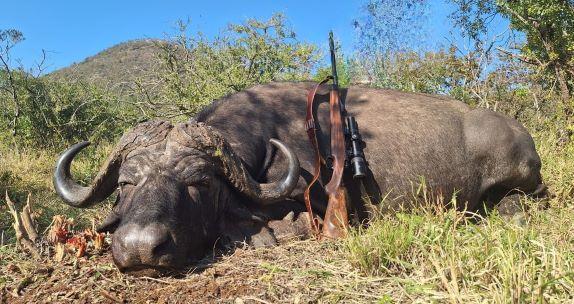
Conclusion
Buffalo hunting offers a rare blend of adventure, challenge, and connection with Africa’s wild landscapes. By preparing thoroughly and respecting ethical standards, we can ensure each hunt is both rewarding and sustainable. Whether we choose a guided safari or a DIY approach, prioritizing safety and conservation allows us to enjoy unforgettable experiences while making a positive impact on wildlife and local communities. Let’s embrace the journey and the responsibility that comes with it.
Frequently Asked Questions
What makes Cape buffalo hunting in Africa unique?
Cape buffalo hunting in Africa is unique due to the animal’s size, strength, and unpredictable nature. Hunters experience challenging encounters in diverse, wild landscapes, making each hunt an adventure that demands skill, patience, and respect for wildlife.
Is buffalo hunting in Africa legal and regulated?
Yes, buffalo hunting in Africa is legal and strictly regulated. Hunters must obtain permits and follow local and international regulations, ensuring ethical and sustainable hunting practices that support conservation efforts.
Which African countries are best for a Cape buffalo hunt?
Top destinations for Cape buffalo hunting include South Africa, Zimbabwe, Botswana, and Namibia. Each country offers unique environments, professional outfitters, and well-established hunting regulations.
What type of firearms are recommended for buffalo hunting?
A powerful rifle with a minimum caliber of .375 is recommended for Cape buffalo hunting. Reliable optics, appropriate ammunition, and familiarity with your firearm are critical for a safe and effective hunt.
When is the best time of year for buffalo hunting in Africa?
The dry season, typically from May to September, is the best time for buffalo hunting. Drier conditions make tracking herds easier and allow for better visibility and access to prime hunting areas.
What physical preparation is needed for a buffalo hunt?
Buffalo hunting requires good physical fitness. Prepare with exercises that build strength, stamina, and endurance, as well as practicing skills like situational awareness and quick decision-making in the field.
Are guided buffalo hunts better than DIY hunts?
Guided hunts offer expert guidance, local knowledge, and logistical support, making them ideal for most hunters. DIY hunts provide freedom and can be more affordable, but require experience and thorough research.
What are the legal requirements for hunting buffalo in Africa?
Hunters must secure proper permits, comply with seasonal restrictions, and follow equipment regulations. Working with reputable outfitters helps ensure all legal requirements are met and hunting is ethical.
How do you ensure safety during a buffalo hunt?
Follow your guide’s instructions, remain aware of your surroundings, use suitable firearms, maintain a safe distance from the herd, and always be prepared for emergencies in the field.
What ethical principles should hunters follow?
Ethical hunters comply with all laws, use fair chase methods, select reputable outfitters, aim for humane harvests, and support wildlife conservation efforts to protect buffalo populations and habitats.
What should you do if you injure but do not kill a buffalo?
If a buffalo is wounded, hunters must follow up immediately, track the animal carefully with the help of guides, and take all steps necessary to ensure a quick and humane conclusion.
Can Americans hunt Cape buffalo in Africa?
Yes, American hunters can legally hunt Cape buffalo in Africa by booking a hunt with licensed outfitters, securing necessary permits, and following all relevant regulations and travel requirements.
How much does a Cape buffalo hunt typically cost?
The cost varies greatly depending on location, outfitter, and hunt services, but most Cape buffalo hunts range from $10,000 to $20,000 or more, including guide fees, permits, and additional expenses.
Is bow hunting Cape buffalo possible?
Yes, bow hunting Cape buffalo is possible but highly challenging. Special equipment and strong physical, mental, and ethical preparation are required, and some areas may have specific regulations for bow hunters.
